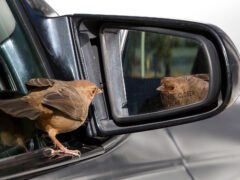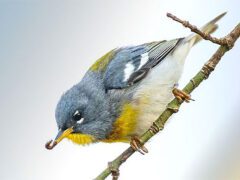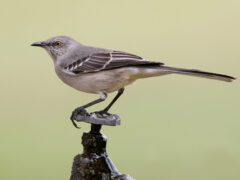The Four Keys to ID
- Size & Shape
Brown Creepers are tiny yet lanky songbirds. They have long, spine-tipped tails, slim bodies, and slender, decurved bills.
Relative Size
Smaller than a White-breasted Nuthatch; larger than a Golden-crowned Kinglet.

 sparrow-sized or smaller
sparrow-sized or smallerMeasurements
- Both Sexes
- Length: 4.7-5.5 in (12-14 cm)
- Weight: 0.2-0.3 oz (5-10 g)
- Wingspan: 6.7-7.9 in (17-20 cm)
© Scott Martin / Macaulay Library
- Color Pattern
Streaked brown and buff above, with their white underparts usually hidden against a tree trunk, Brown Creepers blend easily into bark. Their brownish heads show a broad, buffy stripe over the eye (supercilium).
© David Turgeon / Macaulay Library - Behavior
Brown Creepers search for small insects and spiders by hitching upward in a spiral around tree trunks and limbs. They move with short, jerky motions using their stiff tails for support. To move to a new tree, they fly weakly to its base and resume climbing up. Brown Creepers sing a high, warbling song; they also give a high, wavering call note that sounds similar to that of a Golden-crowned Kinglet.
- Habitat
Brown Creepers breed primarily in mature evergreen or mixed evergreen-deciduous forests. You can find them at many elevations, even as high as 11,000 feet at treeline in the West. In the winter season, the species moves into a broader variety of forests and becomes much easier to find in deciduous woodlands.
© David Badke / Macaulay Library
Regional Differences
Brown Creepers vary somewhat in color and voice across their range. The most noticeable is the “Mexican” Brown Creeper, which ranges into southeastern Arizona and New Mexico. It tends to be darker on the back than creepers in other parts of North America.







